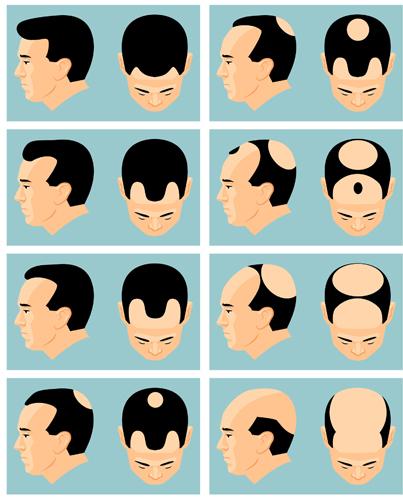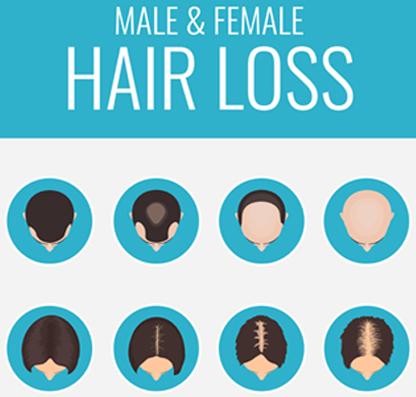ALOPECIA
Male pattern baldness
Balding usually caused by increased sensitivity to the male hormone androgen in some areas of the scalp. This can strike some men even in their teens or early twenties!

Men may also experience hair loss for many more reasons as well, such as stress, alopecia, chemotherapy, changes in diet or environment, heart disease, changes in the prostate, etc.
Beard Hair Loss
Certain conditions can also result in thinning of once full beards and moustaches. For example, alopecia can be limited to the beard alone (called alopecia barbae). It can be noticed as hair loss in the form of circular patches on the face, patchy facial hair growth or inability to grow a beard.
Do not allow these conditions to affect your look and erode your self-confidence. Hair transplants on the head and face region are tried and tested techniques that restore thin hair and help to solve a receding hairline or patchy beard growth.
Our unique FUE implantation along with personalized nutritional therapy to balance out your hormones and vitamins, will ensure you achieve best results. Regain natural looking, healthy results and a spring in your step.
Female Hair Loss
Female androgenetic alopecia ( AGA) is the most common form of alopecia in women, occurring in up to 50% of women in the course of their life. It appears in most cases after the age of 60, but inset in young adult females is not rare. Rapid appearance of patterned thinning in a premenopausal woman should always suggest a possible hormonal disease. Progression is also slower than in males, with generally a more diffuse involvement of the scalp. Patients usually complain of progressive hair thinning, and/or loss of hair volume, or about a continuous or intermittent hair shedding.
In women three different patterns can be observed :
1) diffuse thinning of the crown region with maintenance of the frontal hairline( Ludwig type ) figure
2) thinning and widening of the central part of the scalp with breach in the frontal hairline ( Christmas tree pattern ) .
3) more rare, thinning associated with bitemporal recession (Hamilton type) usually observed in postmenopausal women and in women with hyperandrogenism.

HAIR LOSS SYMPTOMS






